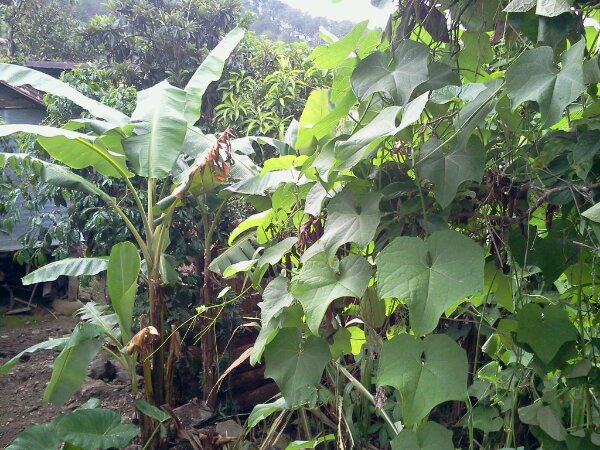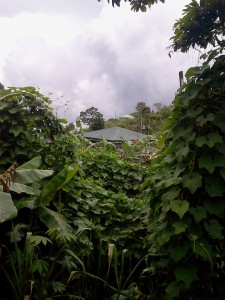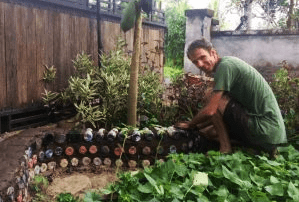I visited the remote village of Lakmaan with a friend a month ago. The visit and what I saw had profound effect on me that I haven’t been able to shake. I believe I experienced first hand the salvation of humanity.
It was a rather mundane visit to a beautiful place. My friend had a meeting at the community hall. She had invited me a long. It was a long, winding and bumpy truck ride to the out-of-the way community. I waited outside the hall while the meeting went on. I stood on the balcony, looking at the unkempt plants spilling over between the hall and the nearby houses. The villages was connected purely by walkways– there were no roads or cars to be seen, thus all the in-between spaces were filled with gardens or similar unkempt patches of trees and bushes.
The meeting took well over an hour. I thus stood there and stared out into the blur of greenery. And a funny thing began to happen. One at a time I began to recognize the plants. I was shocked at the pattern that began to emerge. I called over some local women and asked them for help identifying other plants.
I was blown away.
This what they call in Permaculture, a “Food Forest”! Every plant was edible. It wasn’t a tended garden but rather a thriving ecosystem of different plants doing different things, helping each other out with shade and symbiosis. No one needed to take care of it, water it or fertilize it. It just grew. Decades or even centuries of humans living in this place had lead to a veritable forest of edible plants living together in harmony and abundance.
The main tree was ladden with avocados. Growing up upon it was cyote vine, intermingled with a passion fruit vine (both of which both the fruit and sprouted leaves are edible). Beside were bannana trees. Underneath the banna trees was a carpet of camote (sweet potato, with edible leaves) and chinese malongay (a super healthy green). A native rhubarb called Gaby also sheltered below. Chickens pecked their way in between everything (most notably not pecking the edible greens, but of course helping to fertilize them). In the picture below both a mango and guava tree are nearby.
In sharp contrast to the labour intensive farming I am used to, no one was taking care of any of these plants. They were near somebodies compost pit and chicken house, but that was it. I am certain there were over a dozen, maybe even two dozen edible species growing in this small space.
Imagine… no maintenance, self regulating, highly productive, super healthy food growing in diversity and abundance in a tiny area. There is alot to learn here!
This is the future of humanity as we reconnect to live in harmony with the circle of life.




